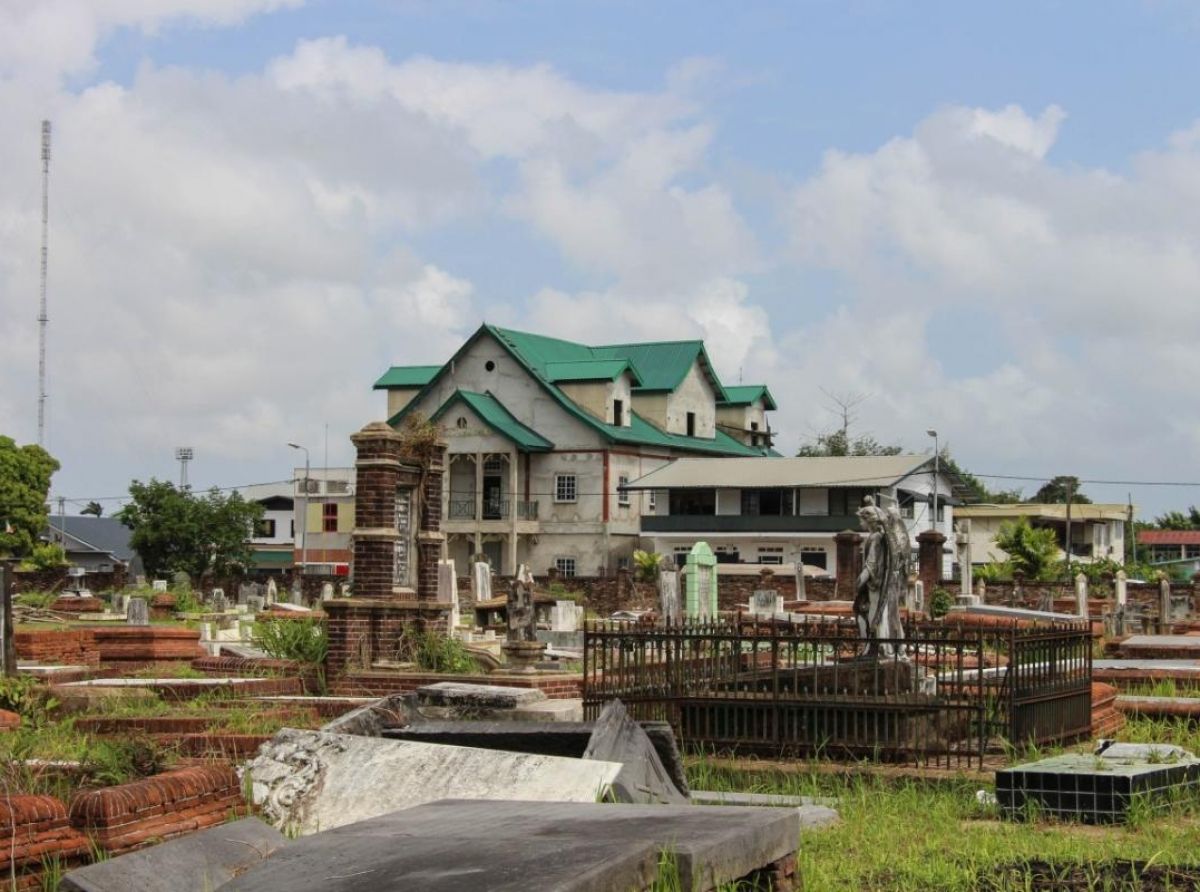
Burial Grounds over Borders: online lectures ICOMOS
Does conserving of these burial grounds over borders requires commitment from both Dutch and local stakeholders? And how have the meanings given to these burial grounds changed over the time?
We look forward to discuss this topic with our four speakers: René ten Dam, Leon Bok, Johan Roozer and Nanette de Jong on 9 December 2020.
Please find the program below.
You can register by sending an e-mail to lezingen@icomos.nl. After this you will receive additional information on how to participate in the Livecast (via Zoom). Please note that the event will be recorded.
Program:
19:30 Welcome and introduction: Maurits van Putten & Jean-Paul Corten
Lectures:
19:35 Dutch Funerary Heritage in a Nutshell: René ten Dam
19:55 Shared Heritage, Local Awareness: Leon Bok
20:15 Short break
20:20 The Case of ‘ Nieuwe Oranje Tuin’, Surinam: Johan Roozer
20:40 The Case of Nagapattinam, India: Nanette de Jong
21:00 Debate
21:15 End
About the lectures:
Dutch Funery Heritage in a Nutshell by René ten Dam
From the seventeenth century, the Dutch have left their traces all over the world. Small and large communities arose where trade was conducted. And people died. Dutch burial culture abroad developed very differently from the Netherlands itself. And each location seems to have a different story. Dutch funerary heritage in a nutshell.
Shared Heritage, Local Awareness by Leon Bok
At present there are still hundreds of cemeteries around the world that indicate the stay of the Dutch. Some of these cemeteries are well known, others seem to be completely forgotten. Why the Netherlands is no longer involved in these cemeteries is not well known. There are many reasons, but that doesn’t mean these cemeteries are forgotten by local people. Aside from involvement of the Netherlands, it is this local awareness that is needed for the shared values. A short view on chances, challenges and threats.
The Case of ‘Nieuwe Oranje Tuin, Surinam by Johan Roozer
The New Orange Garden in Paramaribo dates from the mid-eighteenth century and was used until the mid-twentieth century. The cemetery not only has many special grave monuments, but also shows the development of the country of Suriname on the basis of the dead. It’s not just the heritage of the Dutch, it’s the heritage of Suriname. However, a great effort is required to preserve this heritage. Elsewhere in Suriname are also important cemeteries and graves that should be preserved. What are the opportunities and what are the challenges to achieve this?
The restoration of the tomb and obelisk, Karikop Dutch cemetery, Nagapattinam
by Nanette de Jong
In Nagapattinam, India, local restoration architect Mr Sakthi Murugan Rajendran, under the supervision of INTACH, carried out the restoration of the tomb of Anthonia Steelant-Nilo and the obelisk for Adriana Mossel-Appels at Karikop Dutch cemetery. The project was financed by the Prins Bernard Cultuurfonds. An image report on the restoration and its conservation issues.
About the speakers:
René ten Dam (1969) is an independent researcher and consultant on Dutch funerary heritage. Affiliated with the Dodenakkers.nl foundation and project leader for Shared Cemeteries, a portal about Dutch funerary heritage worldwide. Together with Leon Bok compiler of the canon of the Dutch funerary heritage.
Leon Bok (1965) has 25 years of experience in the topic of funerary history and heritage. He visited almost all the cemeteries in the Netherlands and hundreds of shared cemeteries in other countries. From this he derived a good view on the funerary landscape that the Dutch left all around the world. Bok has its own consultancy on funerary heritage and also works as a specialist on that topic for the Cultural Heritage Agency of the Netherlands. He is also an author on many articles and books on the subject and published regularly on the website Dodenakker.nl.
Johan Roozer is a policy advisor at the Ministry of Education and Culture of Suriname. Together with Stephen Fokke of the Suriname Built Heritage Foundation, he is committed to preserving the funerary heritage in Suriname.
Nanette de Jong was trained as a conservation architect at the Technical University of Delft and has always worked in the field of architectural conservation. Since 2009 she works at the Netherlands Cultural Heritage Agency (RCE). Her work field is mainly sustainable RE-use of old buildings. As part of the team of the Shared Cultural Heritage Program of the RCE she is involved in projects about shared Dutch heritage in Surinam and India. Since 2019 she is the liaison for built heritage between the Dutch government and the six Caribbean islands of the Kingdom.
ICOMOS Nederland is een vereniging van erfgoedprofessionals en vertegenwoordigt Nederland bij ICOMOS internationaal. De organisatie, zonder winststreven, zet zich belangeloos in voor het behoud, beheer, beschermen, rehabiliteren en anderszins maatschappelijk in waarde versterken van onroerend cultureel erfgoed
- Last updated on .


